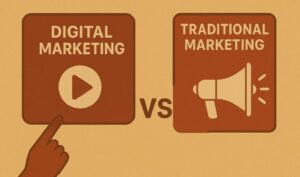A framework, or software framework, what’s it exactly? Curious? Let’s explore the complete story about it.
If you’ve ever tried to build something from scratch—anything at all, not just code—you probably know how overwhelming it can get. There’s a lot to keep track of. A lot that could go wrong. And when it comes to developing software, it’s no different. That’s where software frameworks come in. They’re like scaffolding for your code. Not the flashy stuff, maybe, but essential.
But what exactly is a software framework?
Well, to put it plainly, it’s a pre-written structure of code that provides a foundation for building applications. Think of it like the frame of a house. You’re still choosing the layout, decorating the interior, maybe even redesigning a few walls—but the bones are there already, saving you a huge chunk of time and effort.
Still, that’s just scratching the surface. Let’s take a closer look.
What is a Framework in Software—Defining Without the Buzzwords
A software framework is a collection of tools, libraries, and best practices all bundled together to help developers create software faster and more efficiently. It’s not a one-size-fits-all template, but rather a flexible system that offers structure without taking away creative freedom.
It usually defines a specific way of doing things, not to box you in completely, but to guide you toward certain conventions that promote cleaner code and smoother collaboration. There are predefined functions, classes, and components to help manage tasks like database access, session management, and input validation.
Some people confuse frameworks with libraries, which is understandable. They’re related, but not quite the same. A library is more like a toolbox—you pick what you need, when you need it. A framework, on the other hand, is more opinionated. It says, “Here’s how we do things around here.” You work within its rules and architecture.
And that’s not necessarily a bad thing. In fact, many developers prefer having those guardrails, especially when working on larger or more complex projects. It reduces the cognitive load of making endless micro-decisions.
Actually, for most developers—especially those working in teams—it’s a relief. Fewer decisions to make. Fewer inconsistencies to iron out later. And let’s be honest: most of us just want to write solid code without getting stuck reinventing the wheel.
Why Do Software Frameworks Exist, Anyway?
Imagine having to write the same base code for every single app or website you build. Handling user input, connecting to databases, managing sessions… you’d spend half your time just rewriting code you’ve already written before. It’d be tedious, inefficient, and honestly, kind of a waste of talent.
Frameworks came into existence to solve exactly that.
They standardize the boring (but necessary) parts of software development so developers can focus on what actually makes their project unique. You don’t have to reinvent the wheel every time. Just grab the framework and go.
But it’s more than just a shortcut. Frameworks also help enforce code quality, security practices, and scalability principles right out of the gate. They come with baked-in solutions to common problems, so you’re not scrambling to fix things after they break. Or at least, not as often.
From a broader perspective, frameworks also promote knowledge sharing. Developers familiar with a particular framework can more easily contribute to new projects using it, making onboarding smoother. For businesses, that means consistency and predictability across development teams. For individuals, it means less guessing and more building.
In short, frameworks help solve technical challenges while also addressing workflow and communication problems. They’re not just tools—they’re part of a whole development ecosystem.
Types of Software Frameworks
Frameworks aren’t all built for the same purpose. Depending on what you’re trying to build, the framework you use will vary—a lot. Let’s break down the main categories and what each is typically used for.
1. Web Frameworks
Web frameworks are tailored for building websites and web applications. They manage the structure of a site, route traffic between pages, connect with databases, and help render dynamic content. Examples include:
- React (technically a UI library, but widely treated like a framework)
- Angular (a full-featured front-end framework)
- Vue.js (lightweight and flexible)
- Django (a Python-based back-end framework)
- Ruby on Rails (great for rapid development)
These tools are optimized to handle HTTP requests, manage sessions, serve templated HTML pages, and often come with plugins or modules for authentication, testing, and deployment. They’re ideal for everything from personal blogs to enterprise-level applications.
2. Mobile Frameworks
Mobile app development has its own challenges, and mobile frameworks make it easier to write apps that work across devices and operating systems. A few widely-used frameworks include:
- Flutter (uses Dart; developed by Google; known for slick UIs)
- React Native (allows writing in JavaScript and deploying on iOS and Android)
- Xamarin (uses C# and .NET to build cross-platform apps)
The main advantage? Write once, deploy everywhere. While native apps still offer the best performance, mobile frameworks make cross-platform development more accessible and cost-effective.
3. Desktop Frameworks
Desktop frameworks are used for creating software that runs on Windows, macOS, or Linux. These aren’t as commonly used as web or mobile frameworks these days, but they remain essential in certain industries (e.g., finance, engineering). Notable frameworks include:
- Electron (JavaScript-based, powers apps like Slack and VS Code)
- .NET (especially Windows Forms and WPF for Windows apps)
- Qt (C++-based, known for cross-platform capabilities)
They help with GUI creation, system access, and application packaging. While some developers grumble about Electron’s bloat, it’s hard to beat for quick cross-platform desktop development.
4. Game Development Frameworks
Game development is a different beast altogether. Frameworks here are more like engines, providing physics, rendering, input handling, and more. Popular ones include:
- Unity (C#; very beginner-friendly with lots of tutorials)
- Unreal Engine (C++; great for high-performance or 3D games)
- Godot (open-source; growing fast among indie devs)
These tools are incredibly powerful and tailored specifically for interactive, real-time experiences. A good framework can save you years of work if you’re building anything more than a Pong clone.
There are also specialized frameworks for data science, machine learning, and IoT, but those are often more library-heavy and tend to be part of even broader ecosystems.
How a Framework Shapes Your Software Application Code?
Here’s where things get a little more technical.
When you use a framework, you’re essentially entering into a bit of a partnership. The framework provides a structure—a way of doing things—and you write your code to fit into that mold. This relationship is sometimes described as Inversion of Control.
Normally, you’d call a library function when you need it. But with a framework, it often calls your code at certain points. It’s like being a guest chef in someone else’s kitchen. You bring your own recipes, sure—but you’re still using their stove, their pans, their layout.
This inversion can feel weird at first, especially if you’re used to more freeform coding styles. But it allows the framework to manage lifecycles, state, and flow in a consistent way. For example, a web framework might automatically route user requests to the correct controller based on the URL pattern—you just have to define what happens when it gets there.
Over time, you start to think within the framework’s structure. That can make switching to new frameworks jarring, but it also helps instill solid architecture principles. And as you level up, you learn when to bend the framework’s rules and when to follow them strictly.
In short, frameworks shape not just your code but also how you think about writing it.
Pros of Using a Framework in Software
Let’s be honest—frameworks wouldn’t be so popular if they didn’t bring serious value. Here are some reasons developers lean on them:
Faster Development
With so many features already built in, you can skip a lot of groundwork. That’s huge in tight-deadline environments. You don’t have to spend hours configuring how to connect to a database or handle a basic form submission—it’s often one line of code.
Better Code Organization
Frameworks encourage modular, reusable, and clean code. Not always, but more often than not. When everyone follows the same patterns, it becomes easier to debug, maintain, and scale a project. It also simplifies team onboarding.
Built-in Best Practices
Security, performance, scalability—frameworks usually have these baked in or at least supported with plugins. This is especially helpful for newer developers who might not yet know all the ins and outs of secure coding.
Active Communities
Most major frameworks have a community around them. That means tutorials, plugins, support forums—essentially, you’re never really coding alone. You can usually find an answer to your problem or someone who’s had the same issue before.
These pros combine to make frameworks a reliable ally in most software projects. They aren’t magic, but they do get you 80% of the way with much less friction.
Cons of Using a Framework in Software
While frameworks offer plenty of advantages, they’re not without drawbacks. Understanding these potential downsides can help you choose wisely—and use them more effectively.
Steep Learning Curve
Some frameworks are massive. They come with their own terminology, rules, file structures, and lifecycle methods. Getting up to speed can take time, especially if the documentation is lacking or overly complex. If you’re new to a particular framework, expect some growing pains.
Reduced Flexibility
Frameworks are opinionated by nature. That’s usually a good thing—but sometimes, it can get in your way. If you need to do something unconventional, you might find yourself fighting the framework. Hacking around its constraints can lead to fragile code that’s hard to maintain.
Performance Overhead
Not all frameworks are lightweight. Some include lots of features you might not need, which can slow down performance. For example, a heavy JavaScript framework might add noticeable load time to a simple site. If you’re building something small and fast, a framework might be overkill.
Dependency and Lock-In
Once you build around a specific framework, switching to another isn’t always easy. Your entire codebase—and team skillset—may become closely tied to one ecosystem. If the framework becomes outdated or poorly supported, that’s a risk you inherit.
In short, frameworks are powerful tools—but not silver bullets. The key is to use them when they serve your project’s goals, not just because everyone else is using them.
Framework vs Library: What’s the Real Difference?
It’s important to distinguish between a framework and a library:
| Feature | Framework | Library |
| Control Flow | Inversion of Control (IoC): The framework calls your code. | You control: Your code calls the library’s functions. |
| Structure | Provides a rigid, pre-defined structure for the application. | Provides a collection of functions/classes for specific tasks. |
| Completeness | Semi-complete application; provides the skeleton. | Focuses on specific functionalities; less complete. |
| Scope | Dictates the overall architecture and flow of the application. | Offers tools for specific problems within your application. |
| Analogy | A house blueprint (you build within its structure). | A toolbox (you pick the tools as needed for specific jobs). |
It’s a common mix-up. Developers—especially those new to the scene—often confuse frameworks with libraries. On the surface, they might seem interchangeable. Both offer prewritten code to make development easier. Both save time. Both reduce the chance of introducing bugs by reinventing well-tested solutions. But the way they interact with your code? That’s where the big difference lies.
A library is like a toolbox. You reach in, grab the function you need, use it, and move on. You’re in charge. Your code is the main program calling the shots, and the library simply responds. You might call a date parser from a utility library, or use a rendering function when needed—on your terms.
A framework, though, is more like a partially built machine. You’re fitting your custom components into its design, not the other way around. It often controls the flow of the program. You build around its architecture, follow its rules, and hook into its lifecycle.
Here’s a metaphor that helps: if a library is like ordering ingredients to cook your own recipe, a framework is like entering a kitchen that already has a menu, a prep station, and a sous-chef telling you how things are done.
That might sound restrictive, but it’s not always a bad thing. Frameworks bring order, consistency, and momentum. Libraries give you freedom and minimal constraints. Choosing one over the other isn’t about which is better—it’s about what fits your project’s needs, and how much control you want to maintain.
How to Choose the Right Software Framework?
There’s no universal answer here, unfortunately. The best framework depends on your project, your team, and your long-term goals. Still, a few guiding questions can make the decision a lot clearer.
1. What are you building?
Are you building a web app, a mobile app, a desktop app, or maybe even a game? Each domain has frameworks specifically designed for it. Choosing the wrong category can set you back before you’ve even written your first line of code.
2. What language are you using?
Frameworks are often tied to specific languages. Django? Python. Laravel? PHP. Angular? TypeScript. You’ll want something that fits your language of choice—or that nudges you toward one you’re willing to learn.
3. What’s the learning curve?
If your team has limited experience or needs to ship quickly, a simpler, well-documented framework might be the way to go. Complexity can be powerful, but it’s also expensive in terms of time and onboarding.
4. How active is the community?
A framework with a strong community usually means better documentation, more tutorials, frequent updates, and third-party plugins. That can save you weeks of debugging and development time.
5. What’s the performance and scalability story?
Some frameworks are better suited to small projects. Others are built for scale. Think about not just what you’re building now, but where it might need to go.
And finally, don’t be afraid to prototype, which means an MVP. Build a tiny version of your app in a few frameworks and see what feels natural. Sometimes the best choice isn’t the most popular one; it’s the one that actually helps you get the job done.
Conclusion: So, Should You Use a Software Framework?
Most of the time? Yes. Frameworks save time, reduce complexity, and bring best practices right out of the box. They’re like cheat codes for development—especially if you’re working in a team or building something larger than a hobby project.
But don’t let their popularity fool you into thinking they’re always the right choice. For small utilities, one-off scripts, or experimental work, a framework might be more burden than benefit. You don’t need a giant toolkit for a quick fix.
And even when frameworks make sense, choosing the right one matters. It’s not just about features—it’s about how it fits your brain, your workflow, and your goals. Don’t chase trends. Pick the tool that helps you build better, not the one that just looks good on a résumé.
In the end, a framework is just that—a frame. What you build inside it? That’s where the magic happens.
Frequently Asked Questions about Software Frameworks
While frameworks offer significant advantages for most software projects, especially larger ones or those involving teams, they are not always strictly necessary. For very small utilities, simple one-off scripts, or highly experimental work where minimal overhead and maximum flexibility are desired, building from scratch or using targeted libraries might be more efficient. The decision depends on the project’s scale, complexity, and specific requirements.
Frameworks play a crucial role in team environments by enforcing a standardized structure and set of conventions. This means that different developers working on the same project will follow similar patterns for organizing code, handling common tasks, and implementing features. This consistency drastically improves code readability, simplifies onboarding for new team members, and reduces the likelihood of inconsistencies and conflicts, making collaboration much smoother.
While frameworks do introduce a degree of “opinionated” structure and certain ways of doing things, they are generally designed to be flexible and extensible. They provide the foundational scaffolding, allowing developers to focus their creativity on the unique business logic and specific features that differentiate their application. Think of it as a well-organized kitchen; you still get to cook your unique dishes, but the kitchen’s layout and tools help you do it more efficiently.
Committing to a specific framework can lead to a degree of “vendor lock-in” or “dependency.” If the framework you’ve built your application around becomes outdated, is no longer actively maintained, or its community diminishes, it can pose significant risks. This could lead to a lack of security updates, compatibility issues with newer technologies, and difficulty in finding solutions to problems, potentially making your application harder and more expensive to maintain or upgrade in the long run.
Yes, there are niche cases where avoiding a framework could be beneficial. If you’re building a highly specialized, performance-critical application that requires absolute control over every aspect of the code, or if you’re creating a tiny microservice with very limited functionality, the overhead of a full framework might introduce unnecessary complexity and bloat. In such scenarios, building with minimal libraries or even pure language constructs might offer better performance and finer-grained control.






1 thought on “What is a Software Framework? A Complete Guide to Read”
Great insights on how a will framework in software would look and work like. It’s refreshing; I guess it’s part of your strategy to give out quality information. For serious readers, this blog is worth checking out.